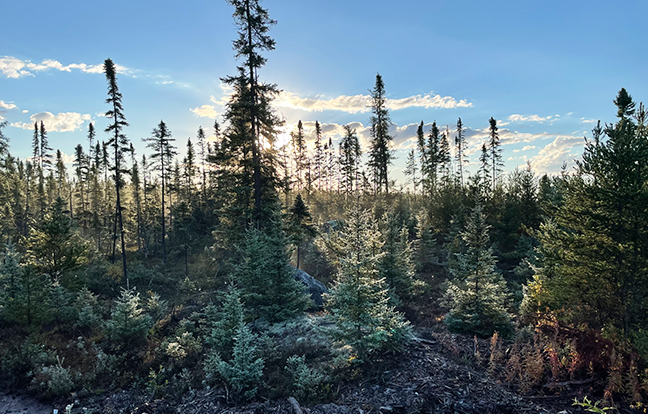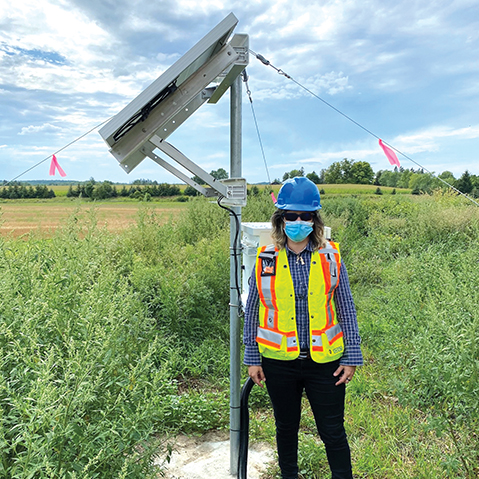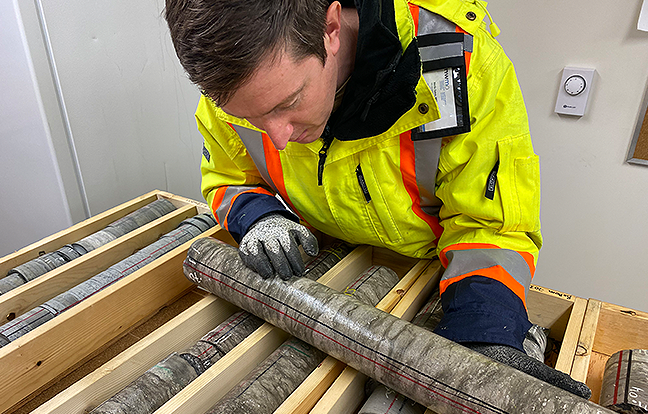Site assessment

From partnership building to environmental monitoring, site assessment work is ongoing in the Wabigoon-Ignace area and the SON-South Bruce area.
In 2021, the NWMO continued working with municipal and Indigenous communities to conduct more detailed technical and social studies in the Wabigoon-Ignace area and the SON-South Bruce area. Despite the COVID-19 pandemic, we were able to continue our fieldwork activities in both areas.
We continue to build sustainable and resilient partnerships with communities in potential siting areas, acknowledging and incorporating their unique values on willingness, safety, environment, transport and benefits to the community. In 2022 and 2023, we will continue working with municipal and Indigenous communities in each siting area to explore the potential for partnership.
Accessing land
In the Wabigoon-Ignace area, the potential repository is located on Crown land, and we have worked with the appropriate government bodies to secure access for studies.
In the SON-South Bruce area, through a series of agreements signed with landowners between 2019 and 2021, we have aggregated just over 1,800 acres of land – enough to potentially host a deep geological repository in the area. The agreements include a combination of option and purchase arrangements, which allow the NWMO to conduct studies and landowners to continue using the land.

Natacha Lugo Bizarro, scientist in the Geoscience team at the NWMO, visited one of five micro-seismic monitoring stations that the NWMO and our contractor installed in the SON-South Bruce area in 2021.
In southern Ontario, we continue to hear questions about the potential impacts of the project on property values. The NWMO has committed to developing, in consultation with the Municipality of South Bruce, a program that will provide residents located near the deep geological repository with peace of mind that the value of their property is protected should the SON-South Bruce area be selected as the site where the project will be hosted.
While the NWMO continues to engage with Saugeen Ojibway Nation, other Indigenous communities and local municipalities, the aggregation of land in South Bruce does not suggest that any of the communities mentioned have provided support for the siting of the repository in this area.
Site investigations

Martin Sykes, Senior Geoscientist at the NWMO, examines a core sample from the Cobourg formation in the SON-South Bruce area.
Technical studies help us assess if a potential site will be a safe location for the repository. In 2021, this work included deep borehole drilling and testing, and installing micro-seismic monitoring stations that allow us to passively observe small-scale earthquakes. We also installed a shallow groundwater monitoring network. In addition to our field activities, data review and modelling continued, which will help us build a strong understanding of the geology at the site.
In the Wabigoon-Ignace area, we continued work to understand the water and pressure profiles in the boreholes that have monitoring instruments installed, to build up our knowledge of the underground geosphere. This work was performed alongside cultural monitors and guides from Wabigoon Lake Ojibway Nation. We also installed a micro-seismic monitoring station network made up of nine micro-seismic stations within a 50-kilometre radius of the site to monitor for seismic activity such as low-magnitude earthquakes.
As of October 2021, drilling and downhole testing of five 1,000-metre-long boreholes were completed. We finished drilling the sixth 1,000-metre-long borehole in November, and downhole testing of this borehole is ongoing. We also installed a shallow groundwater well monitoring network, and we completed geological mapping of the area.
In the SON-South Bruce area, we finished drilling the first borehole and began downhole testing. Drilling and testing of the second borehole also began. This work was performed alongside cultural monitors and guides from Saugeen Ojibway Nation. We completed installation of a micro-seismic monitoring network, with five stations installed. In addition, a 3D seismic survey across the potential site and surrounding area was completed. We also started installing the shallow groundwater monitoring network at the potential site.
The NWMO and our contractors continued to implement site safety protocols to address both conventional health and safety and the need for additional pandemic protective measures, including personal protective equipment such as masks. We conducted all 2021 fieldwork activities without reportable incidents, demonstrating our commitment to protecting people and the environment at all stages of the project.
Throughout the year, we continued to seek feedback and comments from the international Adaptive Phased Management Geoscientific Review Group.
Partnership
Together with communities, we follow a partnership road map that outlines a sequence of partnership-building topics to explore. Communities are building on the values and principles they have identified to guide discussions. Continued refinement and development of a community-specific vision, identification of key considerations and allocated funding to each community will aid project advancement and ongoing community well-being efforts. This will ensure that each of our potential siting areas is in a positive position for participation.
Throughout 2021, the NWMO continued engaging municipalities, First Nation and Métis communities in the siting areas, and surrounding communities to build awareness of the project while developing and sustaining relationships. All the NWMO’s partnership work considers traditional laws, practices and land use.
Starting from the bottom and moving upwards, the road map guides our discussions about partnership with communities.
